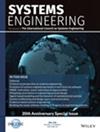Failure probability assessment of emergency safety barriers integrating an extension of event tree analysis and Fuzzy type‐2 analytic hierarchy process
IF 1.6
3区 工程技术
Q4 ENGINEERING, INDUSTRIAL
引用次数: 2
Abstract
Liquefied petroleum gas (LPG) storage fires and explosions occur due to uncontrolled gas leaks and the gradual breakdown of associated safety barriers. By installing an effective safety barrier, these accidents can be greatly reduced. However, this study assesses the probability of failure of emergency safety barriers (ESBs) to help decision makers understand how they can support decisions to reduce the risks associated with LPG storage. In this context, an extension of the event tree analysis is proposed named emergency event tree analysis (EETA). The aim of this paper is to develop an integrated approach that uses interval type‐2 fuzzy sets and Analytic Hierarchy Process (AHP) method and emergency event tree analysis to handle uncertainty in the failure probability assessment of emergency safety barriers (ESBs). In addition, a case study on the failure probability assessment of the emergency safety barriers of the LPG plant in Algeria based on the proposed methodology is provided and carried out to illustrate its effectiveness and feasibility. The results demonstrated the ability of interval type‐2 fuzzy sets and the AHP method to provide highly reliable results and to evaluate the failure probability of emergency safety barriers in emergencies situations. However, the classical event tree analysis (CETA) does not take into account the possibility of assessing the emergency consequences of different accident scenarios. Consequently, it only allows you to estimate the occurrence probability of accident scenarios. The results of this study show that the value of the probability of failure of the emergency safety barriers can be used to estimate the probability of occurrence of emergency consequences under different accident scenarios, improved the reliability and help prioritize emergency improvement measures. The study provides scientific and operational references for analyzing emergency consequences of the various accident scenarios in all fields such as petrochemical, maritime industry, and health occupational.综合事件树分析和模糊2型层次分析法的应急安全屏障失效概率评估
液化石油气(LPG)储存火灾和爆炸是由于不受控制的气体泄漏和相关安全屏障的逐渐破裂而发生的。通过安装有效的安全屏障,这些事故可以大大减少。然而,这项研究评估了紧急安全屏障(ESB)失效的概率,以帮助决策者了解他们如何支持降低液化石油气储存相关风险的决策。在此背景下,提出了事件树分析的扩展,称为紧急事件树分析(EETA)。本文的目的是开发一种综合方法,该方法使用区间型2模糊集和层次分析法(AHP)以及紧急事件树分析来处理紧急安全栅失效概率评估中的不确定性。此外,还基于所提出的方法对阿尔及利亚液化石油气厂的应急安全栅进行了失效概率评估,以说明其有效性和可行性。结果表明,区间2型模糊集和AHP方法能够提供高度可靠的结果,并评估紧急情况下应急安全屏障的失效概率。然而,经典的事件树分析(CETA)没有考虑评估不同事故场景的紧急后果的可能性。因此,它只允许您估计事故场景的发生概率。研究结果表明,应急安全屏障失效概率值可用于估计不同事故场景下应急后果发生的概率,提高可靠性,有助于确定应急改进措施的优先级。该研究为分析石化、海运、健康职业等各个领域各种事故场景的应急后果提供了科学和可操作的参考。
本文章由计算机程序翻译,如有差异,请以英文原文为准。
求助全文
约1分钟内获得全文
求助全文
来源期刊

Systems Engineering
工程技术-工程:工业
CiteScore
5.10
自引率
20.00%
发文量
0
审稿时长
6 months
期刊介绍:
Systems Engineering is a discipline whose responsibility it is to create and operate technologically enabled systems that satisfy stakeholder needs throughout their life cycle. Systems engineers reduce ambiguity by clearly defining stakeholder needs and customer requirements, they focus creativity by developing a system’s architecture and design and they manage the system’s complexity over time. Considerations taken into account by systems engineers include, among others, quality, cost and schedule, risk and opportunity under uncertainty, manufacturing and realization, performance and safety during operations, training and support, as well as disposal and recycling at the end of life. The journal welcomes original submissions in the field of Systems Engineering as defined above, but also encourages contributions that take an even broader perspective including the design and operation of systems-of-systems, the application of Systems Engineering to enterprises and complex socio-technical systems, the identification, selection and development of systems engineers as well as the evolution of systems and systems-of-systems over their entire lifecycle.
Systems Engineering integrates all the disciplines and specialty groups into a coordinated team effort forming a structured development process that proceeds from concept to realization to operation. Increasingly important topics in Systems Engineering include the role of executable languages and models of systems, the concurrent use of physical and virtual prototyping, as well as the deployment of agile processes. Systems Engineering considers both the business and the technical needs of all stakeholders with the goal of providing a quality product that meets the user needs. Systems Engineering may be applied not only to products and services in the private sector but also to public infrastructures and socio-technical systems whose precise boundaries are often challenging to define.
 求助内容:
求助内容: 应助结果提醒方式:
应助结果提醒方式:


